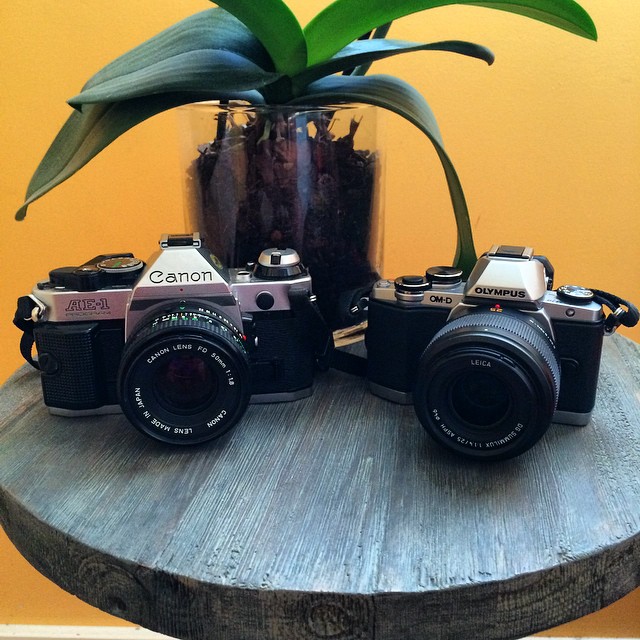NOTE: This is an update to my article on how to build a lightweight photography kit for the urban professional. I have updated the original article to add this information, but I’m including it here separately for those of you who already read that piece.
Lately I’ve been experimenting with an old analog SLR that belonged to my father. It’s a Canon AE-1 Program, one of the most popular 35mm film SLR’s from the 80’s. It’s in absolutely mint condition and it just pained me to see it unused, so I grabbed it a couple months ago and I’ve been playing with it since then.

Fortunately, this camera also fits inside the RR Field Pocket without any issues, maybe even better than the E-M10. Despite being a 35mm film SLR —this sensor size is what we’d call “full-frame” in the digital world—, the body of the AE-1 Program is remarkably compact. As for the lens, I’ve been shooting with the kit lens, a Canon FDn 50mm f/1.8, which is pretty good, giving sharp images and decent bokeh. I also recently purchased a used Canon FDn 35mm f/2.0 lens on ebay, which is fantastic for street photography. It’s the fastest Canon FD lens in this focal length, but it’s even smaller —although a bit heavier— than the Panasonic Leica 25mm f1.4 for Micro Four Thirds
Shooting with this camera is awesome. It’s manual-zoom only, and it supports full manual operation as well as full auto-exposure and shutter-priority modes. I love it. I usually shoot in shutter-priority mode. I’ll probably end up going full manual, but in the meantime, having these extra modes is certainly helpful.
So far I’m loving the experience of shooting film, and I would recommend anyone to try it. The good news is, you can get a high-end 35mm film SLR and a pretty good lens for under $100 on ebay, easy. I think it’s a great creative exercise because it forces you to be much more thoughtful and deliberate about your photography, and that’s good. Full auto-everything doesn’t make you a better photographer; being 100% responsible for the image you capture does.
